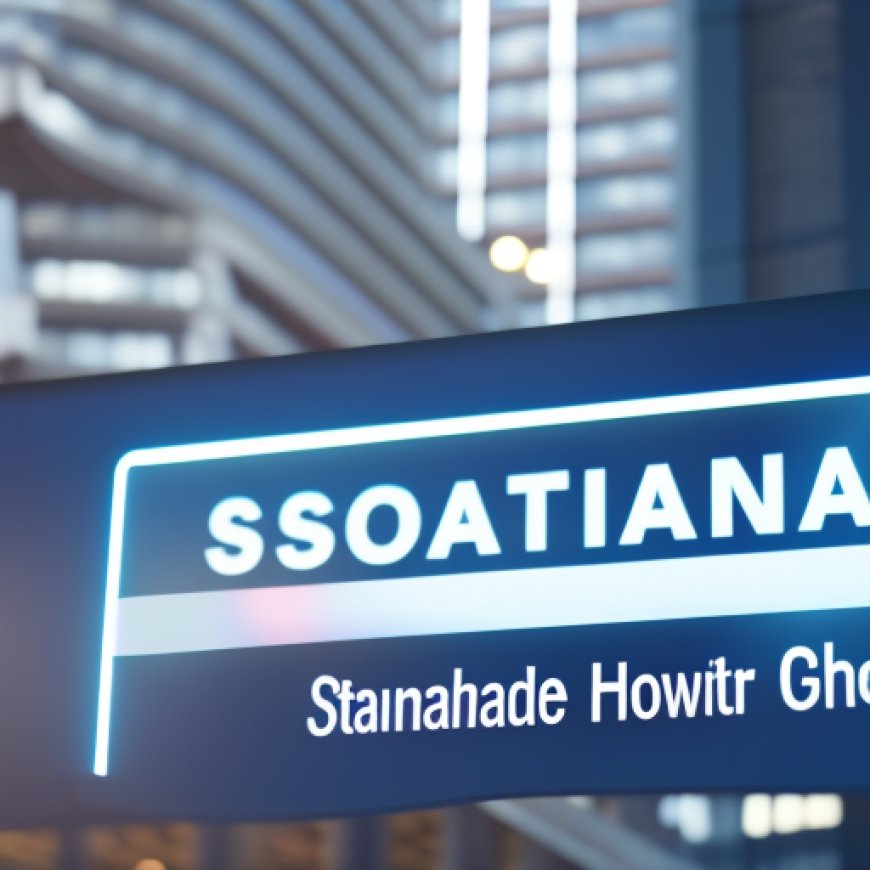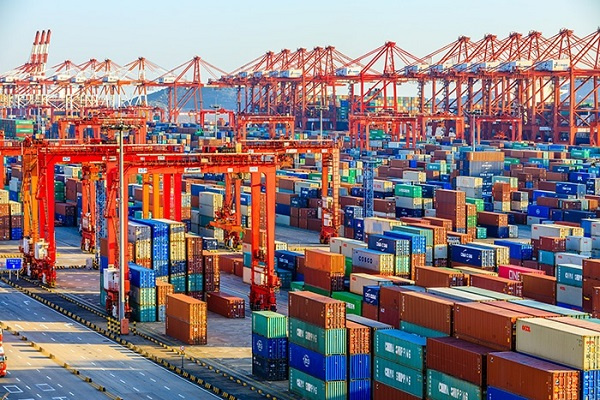AGOA vital to sustainable growth, job creation and industrialization – Standard Bank
AGOA vital to sustainable growth, job creation and industrialization ... GhanaWeb



The African Growth and Opportunity Act (AGOA) and its Impact on Sustainable Development Goals
The African Growth and Opportunity Act (AGOA) is a pivotal agreement between the US and Africa to support and help grow African industries and markets, says Standard Bank (parent company of Stanbic Bank Ghana), Africa’s biggest lender by assets.
Speaking ahead of the 20th AGOA Forum taking place from 2-4 November 2023 in Johannesburg, Kenny Fihla, Chief Executive, Corporate & Investment Banking at Standard Bank Group, says a significant renewal of AGOA will help drive trade and support ongoing investment ties between the US and Africa. The benefits are profound, as it will also support sustainable growth, job creation, and industrialization.
This comes as Africa’s businesses are challenged by access, costs, risks, and credit issues when trading across regional and international borders.
AGOA’s Contribution to Sustainable Development Goals
“African businesses and markets are becoming increasingly sophisticated and ready to go to the next level. Powerful initiatives like AGOA and the African Continental Free Trade Area (AfCFTA) are key to making this happen,” Fihla said.
- AGOA imports: Recent statistics show the significant impact AGOA has on trade. Total US AGOA imports were $9.4 billion in 2022, up 57% from $6.0 billion in 2021 and more than double 2020 values. Notably, AGOA non-energy imports increased by 21% in 2022 to $5.0 billion. The top non-energy import categories included:
- Motor vehicles ($1.5 billion)
- Textile and apparel ($1.4 billion)
- Agricultural products ($679 million)
- Metals ($626 million)
- Standard Bank’s Role: As the leader in facilitating Africa-US trade, Standard Bank is leveraging its resources to enable access to and participation in regional and global value chains and to ensure partnerships with leading economies like the US continue to flourish. “We believe that active contributions to public-private dialogues like AGOA are essential to these developments and future growth,” adds Fihla.
- AGOA Renewal: AGOA grants duty-free, quota-free treatment for exports from eligible sub-Saharan Africa countries into the United States (US), with 35 countries eligible for AGOA benefits in 2022. AGOA is up for renewal in 2025.
AfCFTA and its Potential for Sustainable Growth
Together with AGOA, Standard Bank is also optimistic about the transformative impact AfCFTA can have on inter-regional trade in Africa.
The US has expressed its support for the AfCFTA, which, once fully implemented, will be the world’s largest free trade area, bringing together 55 countries with a combined GDP of approximately $3.4 trillion.[1]
“The AfCFTA will create much-needed efficiencies across Africa’s trade borders. The potential with the world’s biggest economy is immense as financing for priority infrastructure projects, energy, and other key investments take place,” articulates Fihla.
Standard Bank believes this single market holds the key to unlocking sustained levels of growth, reducing poverty, and scaling up industrial capacity across the continent.
“We are committed to building trusted and efficient domestic/regional value chains integrated into global supply ecosystems. Standard Bank is building finance and trade solutions to help address the tariff and non-tariff barriers required to realize the continent’s ambitions. Standard Bank is also leading efforts to reduce the impact of climate change by building sustainable solutions. The future is extremely bright – especially if we have the right partners on board,” says Fihla.
AGOA Forum: Showcasing Africa’s Value and Growth Prospects
As long-term Africa bulls, Standard Bank is convinced that Africa is the growth story of this century.
“This week’s AGOA Forum is an important opportunity for the continent to showcase its value and growth prospects while it also allows the US to engage and see for itself what benefits this agreement continues to bring,” concludes Fihla.
Watch the latest edition of BizTech below:
[embedded content]
Ghana’s leading digital news platform, GhanaWeb, in conjunction with the Korle-Bu Teaching Hospital, is embarking on an aggressive campaign which is geared towards ensuring that parliament passes comprehensive legislation to guide organ harvesting, organ donation, and organ transplantation in the country.
SDGs, Targets, and Indicators Analysis
1. Which SDGs are addressed or connected to the issues highlighted in the article?
- SDG 8: Decent Work and Economic Growth
- SDG 9: Industry, Innovation, and Infrastructure
- SDG 17: Partnerships for the Goals
The article discusses the African Growth and Opportunity Act (AGOA) and its impact on trade, job creation, and industrialization in Africa. These issues are directly connected to SDG 8, which aims to promote sustained, inclusive, and sustainable economic growth, full and productive employment, and decent work for all. Additionally, the article mentions the transformative impact of the African Continental Free Trade Area (AfCFTA), which is related to SDG 9, focusing on building resilient infrastructure, promoting inclusive and sustainable industrialization, and fostering innovation. Lastly, SDG 17 is relevant as it emphasizes the importance of partnerships for achieving the sustainable development goals.
2. What specific targets under those SDGs can be identified based on the article’s content?
- SDG 8.1: Sustain per capita economic growth in accordance with national circumstances and, in particular, at least 7% GDP growth per annum in the least developed countries.
- SDG 8.2: Achieve higher levels of economic productivity through diversification, technological upgrading, and innovation.
- SDG 9.1: Develop quality, reliable, sustainable, and resilient infrastructure.
- SDG 9.2: Promote inclusive and sustainable industrialization.
- SDG 17.16: Enhance the global partnership for sustainable development.
Based on the article’s content, the targets mentioned above can be identified. The article highlights the need for sustained economic growth, job creation, and industrialization in Africa, which aligns with SDG 8.1 and SDG 8.2. It also emphasizes the importance of developing infrastructure and promoting inclusive and sustainable industrialization, which correspond to SDG 9.1 and SDG 9.2. Furthermore, the article mentions the African Growth and Opportunity Act (AGOA) as a partnership between the US and Africa, connecting to SDG 17.16.
3. Are there any indicators mentioned or implied in the article that can be used to measure progress towards the identified targets?
- GDP growth rate
- Job creation
- Trade volume
- Investment ties between the US and Africa
- Access to regional and international markets
- Reduction of trade barriers
The article mentions several indicators that can be used to measure progress towards the identified targets. GDP growth rate can be used to assess progress towards SDG 8.1. Job creation is another indicator that reflects progress towards SDG 8.1. Trade volume, investment ties between the US and Africa, access to regional and international markets, and reduction of trade barriers are indicators that can be used to measure progress towards SDG 8.2, SDG 9.1, and SDG 9.2. These indicators reflect the growth of industries, trade, and infrastructure development.
4. Table: SDGs, Targets, and Indicators
| SDGs | Targets | Indicators |
|---|---|---|
| SDG 8: Decent Work and Economic Growth | 8.1 Sustain per capita economic growth in accordance with national circumstances and, in particular, at least 7% GDP growth per annum in the least developed countries. | GDP growth rate |
| SDG 8: Decent Work and Economic Growth | 8.2 Achieve higher levels of economic productivity through diversification, technological upgrading, and innovation. | Job creation |
| SDG 9: Industry, Innovation, and Infrastructure | Trade volume, investment ties between the US and Africa, access to regional and international markets, reduction of trade barriers | |
| SDG 9: Industry, Innovation, and Infrastructure | 9.1 Develop quality, reliable, sustainable, and resilient infrastructure. | Investment ties between the US and Africa, access to regional and international markets |
| SDG 9: Industry, Innovation, and Infrastructure | 9.2 Promote inclusive and sustainable industrialization. | Trade volume, investment ties between the US and Africa, access to regional and international markets, reduction of trade barriers |
| SDG 17: Partnerships for the Goals | 17.16 Enhance the global partnership for sustainable development. | Investment ties between the US and Africa |
Behold! This splendid article springs forth from the wellspring of knowledge, shaped by a wondrous proprietary AI technology that delved into a vast ocean of data, illuminating the path towards the Sustainable Development Goals. Remember that all rights are reserved by SDG Investors LLC, empowering us to champion progress together.
Source: ghanaweb.com

Join us, as fellow seekers of change, on a transformative journey at https://sdgtalks.ai/welcome, where you can become a member and actively contribute to shaping a brighter future.







